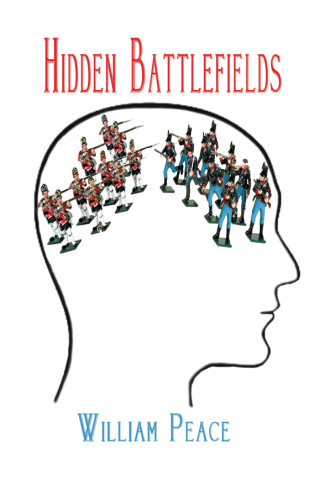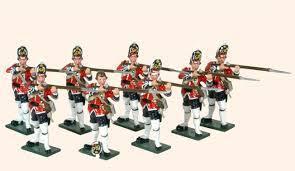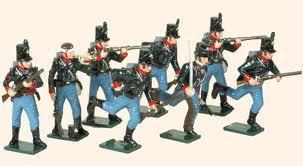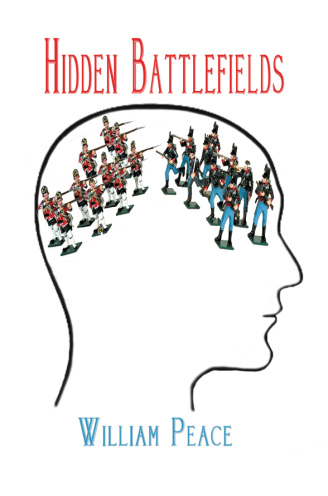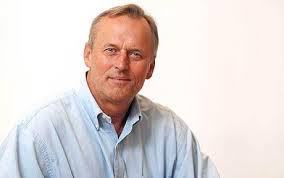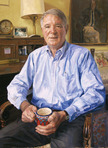William Peace's Blog, page 53
December 30, 2014
The Outlook for Bookstores
The news about the health of bookstores has been pretty downbeat during the last couple of years. Between 2000 and 2007 about 1,000 independent booksellers closed. I was therefore pleased to see an article in Independent, the journal of the Independent Book Publishers Association. The article, by Linda Carlson, was pretty full of good news, but somewhat lacking in statistics.
The one statistic which was reported: according to an article published in Slate, the membership of the American Booksellers Association increased more than 20% from 1,651 in 2009 to 2,094 in 2014. While 20% is a substantial increase, the average annual increase is about 5%. Still, this is healthy growth. To put this increase in perspective, Donna Paz Kaufman, an industry consultant is quoted as saying: “Fewer entrepreneurs are stepping forward to own independent bookstores, even at a time when many communities throughout the country long to replace a Borders or Barnes & Noble store that proved too large to be sustainable.” She goes on to say that some would-be entrepreneurs have family members who are risk-averse and cannot justify investing the family’s wealth in “something that still seems iffy”. My impression is that the apparent ‘growth’ in ABA membership is actually the renewal of lapsed membership, rather than new members. Nonetheless, this is a good sign.
So, what is driving the improvement in outlook for independent bookstores? Shane Gotwalls, of Gotwalls Books in Macon, Georgia says, “Feedback from our customers tell us that they are tired of impersonal on-line shopping. . . . We hear more and more often that there’s nothing like the smell of a bookstore. . . . We try to give the best service possible, and we believe our customers keep returning because we are successful with this goal.”
WinterRiver Books in Oregon has kept its sales from slipping with a policy of discounting hardcover editions of best sellers by 20%.
Mirian Sontz, CEO of Powell’s bookstores in Portland, Oregon says that the store sold almost 10,000 copies, prepublication, of Edan Lepucki’s debut novel, California, after Hatchette authors Stephen Colbert and Sherman Alex recommended, on air, that it be purchased from Powell’s in response to the Amazon-Hachette conflict! Sontz says, “The conversation about conscious on-line shopping continues, thanks to this increased awareness.”
Flintridge Bookstore & Coffeehouse in La Canada, California reports that they provide core literature for the La Canada school district. “We work very closely with public school faculty and staff and we stock titles on required reading lists.” Flintridge also emphasizes local history, geography, and culture of the San Gabriel Mountain foothills.
Espresso Book Machines are a drawing card for several bookstores which have them. While only a fraction of the inquiries received by the bookstores result in orders, many writers who use the machines return again and again for additional print runs.
Other tactics for drawing people into bookstores include hosting story hours for kids and YA book clubs. Some bookstores offer tickets to author events. The ticket may require a book purchase or offer a discount. Elliott Bay Books now hosts 500 events a year and says that “events keep us in mind as a cool place to visit . . . but having customers buy books in order to attend can backfire by discouraging people from attending.”
In summary, each successful indie bookstore seems to have its own special identity and offerings which appeal to local customers. It offers personal service to frustrated on-line customers, and the touch, feel and smell of actual books!

December 15, 2014
Living the characters
How does one, as an author, decide what a given character says or does?
For me, the answer is: I try to get inside the character’s skin. What this means in practice is that I try to feel what the character is feeling at that particular moment, and I ask myself, ‘what is s/he thinking?’ While I don’t explicitly bring it to mind, I’m aware of the character’s background, his/her values, personality and ambitions. This process is particularly necessary when a character is suddenly put in an unexpected or difficult position.
Fir example, in Efraim’s Eye, the principal character, Paul, is suddenly asked by Naomi, “Do you love me, Paul?” By way of background, Paul and Naomi had become lovers two days previously. She is a very pretty and sweet charity worker, a rootless, lonely, thirty-something. Paul is a London-based widower in his fifties, a financial consultant who has a girlfriend his own age. Naomi and Paul are not an obvious match, but Paul finds Naomi enchanting and Naomi sees Paul as a secure, reliable father figure, who, nonetheless, wakens her dormant sensuality.
The story continues:
Unprepared as he was for that question, Paul knew that there could be only one answer. “Yes, yes, of course I love you.”
Naomi’s head tilted, and her gaze fell to the table cloth. Uncertainly, she asked, “Why do you love me?”
Instinctively, Paul knew that his answer must not include the word ‘beautiful’ or one of its synonyms. He said, “You’re a very sweet idealist, Naomi. You are a woman with great talents as a linguist, as a musician, and in dealing with people. But for me, best of all, is your joie de vie. Life is a great, pleasing adventure for you, and it’s delightful to be with you.”
For some moments, Naomi gazed at him, apparently repeating his words in her mind. She asked, “So you think I’m a sweet, talented, adventurous woman?” She pronounced the word ‘woman’ awkwardly, as if it were a term unfamiliar to her.
He smiled. “For a four word summary, that will do.”
Paul knew the answer to the reciprocal question. She loved him as a daughter loves, and he had awakened her latent brilliance as a lover. But, for her part, she had wanted to know whether she, herself, was a person who could be loved.
Paul’s response, ‘Of course I love you’ leaves room for doubt about the depth of the feeling behind it, and in the days ahead, he begins to doubt the durability of the relationship. His response to the question, ‘why do you love me, Paul?’ manages to avoid the artificiality of a ‘because you’re beautiful’ response. He recognises that she has a hunger to be valued for more than her looks. His answer, from his point of view, is both truthful and recognizes as strengths what she may have seen as weaknesses.
So this exchange between Paul and Naomi, while unexpected by the reader, helps to define these two characters, and begins to open a path to the future for each of them.

December 4, 2014
Amazon vs. Hachette
Regular readers will know that I have been following the dispute between Hachette, the French-owned publishing house and Amazon. The two companies have now signed a deal to end their long-running price dispute.
According to the Daily Telegraph: the two firms had disagreed about the price of ebooks which can be read on Amazon’s market-leading Kindle device. Amazon believed most new ebooks should be $9.99, which many in the traditional publishing industry said was not financially sustainable. It also wanted to restructure the way revenues were split between the publisher, author and itself. Hachette refused to back down on lowering prices. The dispute gained public attention earlier this year when hundreds of authors supported Hachette. They argued that Amazon’s pricing tactics were damaging writers and high streets around the world. The online retailer responded by increasing shipping times on Hachette books, blocking pre-orders, and redirecting customers to other publishers. In August a group of 900 writers paid for a full page advert in The New York Times criticising Amazon’s actions: “These sanctions have driven down Hachette’s authors’ sales on Amazon by at least 50%. Amazon has other negotiating tools at its disposal; it does not need to inflict harm on some of the very authors who have helped it to become one of the largest retailers in the world.”
Under the agreement which has been reached between the two companies, Hachette will have responsibility for setting prices of its ebooks, and “will benefit from better terms when it delivers lower prices for readers,” according to a joint press release.
Hachette said: “This is great news for writers. The agreement will benefit Hachette authors for years to come.”
David Naggar, vice president of Kindle, said, “We are pleased with this new agreement as it includes specific financial incentives for Hachette to deliver lower prices, which we believe will be a great win for readers and authors alike.”
How can all three of the statements in quotation marks, above, be true at the same time?
The short answer is, I don’t know. But I have a theory. Suppose under the old deal at $9.99, Amazon got 40% and Hachette got 60%: $4 for Amazon and $6 for Hachette, and suppose that Hachette pays its authors a one third royalty from its revenue: $2 per copy. And suppose, under the new deal, Hachette prices its ebooks at $15 per copy and gets 55% of the selling price, while Amazon gets 45%. This would give Hachette income of $8.25 per copy, and the author would get $2.75 per copy: a better deal for all three parties assuming that the volume of the ebook is not price sensitive. But, if for example, only half as many copies are sold at $15 as at $10, everybody is worse off. This is where Amazon’s obsession comes in: the lower the price the more you sell! I’ll bet that the deal is structured so that Hachette’s share of the sale increases as the price is lowered. In this example, for each dollar reduction in price, Hachette would get one percent more of the selling price.
So:
Statement no. 1 is true: Hachette gets better terms as it lowers its price (not better revenue, but better terms)
Statement no. 2 is true: Hachette authors will benefit ($2.75 vs $2 assuming that the volume of sales are not particularly affected at the higher price)
Statement no. 3 is true: lower prices are a win for authors and readers alike (assuming lower prices mean greater sales volumes)
It seems to me that this dispute boils down to different views on the price elasticity of books. Amazon believes that price is very elastic: the higher the price, the less you sell and the lower the price the more you sell. Amazon apparently has some data which supports this theory.
Hachette believes that, within a certain price band, the price is inelastic: volume is largely unaffected by price.
My own view is that Hachette is probably right. They have experience with their authors and their genres to be able to predict volume, and they have a pretty good idea of where the price band should be. They will be quite sure that if they price a book at a third of its normal price band, it won’t sell four times as many.

November 28, 2014
Topics for Novels
How do writers choose a topic to write about? What factors influence the setting, the characters, the time frame, the key events?
I suspect that every author will have a slightly different answer to these questions. In my case, there was a different set of criteria which influenced the topic for each of my six (so far) novels. I often think it would be easier if I had a consistent topic and some repeat characters, as the late P D James had with her detective stories. The problem for me is that I get restless with repetitive tasks. I would make a very poor assembly line worker. I changed my major in college twice – from architecture, to mathematics – before settling on physics. As a naval officer, every day was different. As a salesman of heavy electrical equipment, every sale was unique. As a manager and as a management consultant, every situation one faces is different.
Starting with Fishing in Foreign Seas, I tried to stay within my experience: romance, Sicily, the north-eastern US, raising a family and the sale of heavy electrical equipment. I added some sex and some intrigue for seasoning. For me, this worked, but I wanted something grander, more important.
What could be more important than sin? What could be grander than six life stories entwined? That was the premise of Sin and Contrition. With a chapter devoted to each sin, I found that each character developed uniquely, and that my imagination could add interesting – but credible – surprises.
Efraim’s Eye came about because of a charity assignment I had in Mexico, where we suspected the chief executive of the charity of being corrupt. I felt that a corrupt charity was interesting, but probably not gripping. But, what if the purpose of the charity’s corruption was the financing of a terrorist attack? And what if there was an intense love story?
The feedback from readers of Efraim’s Eye was very good: it was an exciting thriller with believable characters. I decided that I wanted to write another thriller; this time about the drugs trade, and I decided that Afghanistan, with its huge output of opium for heroin, and being in the public eye, was the setting. But, I also needed an immediate destination for the heroin, as very little of it is consumed in Afghanistan. Some research convinced me to make Iran the home of the bad guy and the immediate destination of the heroin in The Iranian Scorpion.
Before I finished Scorpion, I started on a novel in the first person about a bright, self-conscious boy who hears unfamiliar voices, which, over time, he attributes to representatives of God and the devil. I wanted to write a serious novel which, through the life of Henry, explored psychological, theological, and sociological issues around the choices we make in our lives – for better or worse. I wrote three chapters of Sable Shadow and The Presence before setting it aside: I had lost my way and needed to take a break. But with the completion of The Iranian Scorpion, I came back to Sable Shadow with new enthusiasm, and I completed it.
In the back of my mind was another novel, slightly similar to Sable Shadow, but an allegory, told in the first person, set largely in the Middle East, with Middle Eastern characters, and dealing with the search for meaning in life. I’m working full tilt on it now, but before getting really started, I wrote Hidden Battlefields, another thriller, this one about a huge shipment of cocaine from Peru to the ‘Ndrangheta mafia in southern Italy. Four of the main characters from Scorpion are in Hidden Battlefields. The theme of Battlefields is how major conflicts in our values and priorities can affect who we really are.
As I look back on the progression of novels, two trends stand out, both of which amount to increasing levels of challenge for me as a writer:
First, my craft as a writer is being challenged on all fronts: character development, thematic subtlety, language, credibility and interest.
Second, I have to do more and more research, to the point now where I spend more time on research than I do on writing.

November 20, 2014
Hidden Battlefields
My sixth novel, Hidden Battlefields, has just been published.
A thriller tracking the movement of $250 million in cocaine from Peru, east of the Andes, down the Amazon, across the Atlantic and northwest Africa to southern Italy. Four of the main characters from The Iranian Scorpion star in Hidden Battlefields. Robert Dawson is the DEA agent who goes under cover as a Shining Path operative. David Dawson, a retired US Army general and Robert’s father, adds determined confusion. Mary Jo Mignot, the defence contractor with a top secret clearance, is David’s love interest. Or is she Robert’s? Kate Conway, the Pulitzer-Prize-winning journalist, is Robert’s love interest. Or is she David’s? New characters representing the Shining Path, Peruvian, Maoist terror organisation, and ‘Ndrangheta, the Italian crime syndicate are introduced.
The theme of the novel is conflicting personal priorities, and how they affect our identities.


November 13, 2014
Creating a Cover Design
Creating a cover design is a difficult process.
I always start with a cover concept in mind. My latest novel is a thriller which has as its theme how conflicting priorities can change who we are: our identity. One of the characters is a international, freelance journalist, who has found that long-term relationships don’t work very well when one is working in a country like Afghanistan. She has therefore decided to focus on her career in journalism, and, in doing so, she has won a Pulitzer prize. But, she is lonely and longs for a loving relationship – a relationship which will make her the person she wants to be.
Given this theme, I asked the cover designer to produce a graphic which included a transparent human head inside of which are toy soldiers engaged in combat.
Here is what they came up with initially:
Not surprisingly, I didn’t like it at all. My wife said it looked like the cover for some kind of a cult book. I objected to the spirals; I was told that they are watermarks which will be removed when the head image is purchased. I didn’t like the iridescent blue: that had to go. The dozens of small images in the background just added confusion. The soldiers (which one can barely see in this image) were too small and didn’t look as though they were fighting. After some discussion, I sent the designer copies of the images below:
I found these images on the internet, and the only problem was that they weren’t high resolution. The designer worked on the images to sharpen them.
Then, rather than have a transparent, three-dimensional head, I opted for a simple, two-dimensional outline of a head. I asked that the colour scheme be simplified: red, blue and black only.
Then we got into a lengthy back-and-forth about the fonts on the original cover, which I didn’t particularly like. My wife and I were in Rome a couple of weeks ago, and at the check-out counter of a local supermarket, she spotted the cover of Paulo Coelho’s latest novel which appeared to have an embossed font. Very stylish! I sent a picture of the cover to the designer, but it turned out that if ‘Hidden Battlefields’ were to be in that font, it would have to be on two lines rather than one. So we compromised on the font.
So, here, at last, is the cover:
The book itself should be available in a week to ten days.


November 5, 2014
About Blurb
In this Monday’s Daily Telegraph there was an article ‘Book Minnow Opens New Chapter in Publishing’, written by Andrew Cave. What particularly caught my eye was the graphic below. (Sorry that the graphic isn’t very clear, but it wasn’t included in the online version of the Telegraph, so I had to scan it.) You may be able to make out that the source of the graphic is ‘PwC’, which I assume means Price Waterhouse Coopers. This chart looks rather suspicious to me for several reasons. First of all the total volume in dollars remains pretty constant over the ten year period: $16 billion. The total value should be increasing with inflation and with the number of readers, worldwide. Secondly, the value of Ebooks & Print and Audio books will be equal in three year’s time; since Ebooks are less expensive than physical books, the implication is that Ebooks will be out-selling physical books by about 50% in volume terms. If this is the case, it’s the first time I’ve heard of it. And third, the individual plots are both pretty much straight lines. While this may be true for physical book sales, the growth of Ebooks has been anything but linear. Strangely, this graph was not referred to in the article itself.
The article itself was about the self-publishing house, Blurb, founded by Eileen Gittens in San Francisco in 2006. The company has a turnover of $90 million this year. The article says that Blurb has published 3 million books. Does Mr Cave mean 3 million copies of books?. And it says that “a new title comes over the servers every 2.1 seconds”. This would literally mean that Blurb is publishing nearly 15 million new titles every year. I find this difficult to believe, given the turnover of $90 million.
But, let’s set the numbers aside.
Blurb is a software-based company which allows the author to choose Ebook or print copy formats. The minimum order size for printed books is 750. Blurb’s online platform gives the author tools to choose layouts.
Naturally, Gittens sees many advantages her company has over traditional publisher. Not the least of these advantages is getting published at all. Blurb’s price includes its mark-up. “If the price of printing your book is £5 because you’re going to order a few thousand,” Gittens says, “and you’re going to sell that book for £25, we would literally send you £20 every time somebody buys a copy.” (This must be if you happen to have one of the titles that Blurb has for sale on its website.) Blurb also sells through Apple and Amazon.
I can imagine what my publisher (a co-op publisher) would say about Blurb. “They don’t produce their books professionally. They can look homemade, unedited, without concise layout or a professionally designed cover. Besides, they offer no marketing help, which we offer at extra cost.”
Perhaps the most interesting point in this article is this: Gittins believes many people could one day have their own book, as well as their own Facebook page. “It’s part of your personal brand,” she says. I think this is true. Many people would like to leave a record of what they have achieved in life. The only problem is: would anybody want to read it?


October 28, 2014
Amazon’s £270m Record Loss
There was an article in the Daily Telegraph recently with the above title. It said:
“More than $15 bn was wiped off the value of Amazon last night, after the online retail giant reported the biggest loss in its history. The company increased sales by a fifth to £20.58 bn in the three months to October, but plunged $437 m (£273 m) into the red as it spent heavily on new projects. That figure is more than 10 times the $41 m loss Amazon reported in the same period a year earlier.
The business has been ploughing money into myriad new schemes as it battles to gobble up market share and tries to compete with rivals such as Apple that are increasingly treading on its turf. Jeff Bezos, Amazon’s chief executive and founder, has authorised the company to spend tens of millions of dollars developing drones and much more on new servers for its online data storage business.
He has also led a spending spree on film and television rights, so that Amazon can compete with the like of Netflix and Hulu, and has reportedly been selling gadgets such as its Kindle Fire e-reader as a loss, in order to build up its base of loyal users.
‘We’ve been for several years now, in an investment mode because of the opportunity in front of us,’ Thomas Szkutak, chief financial officer said.
Shares in the company fell more than 11 pc in after-hours trading in New York, to $278.62, their lowest point in over a year.”
As those of you who have read by blog will know, I have mixed feelings about Amazon. When there is something I need for the house or a book I want to buy, I will invariably turn to Amazon for service and price. But, at the same time, I think that Amazon has done a lot a damage to authors and to bookstores.
But, if I set my personal feelings aside, and think about the above announcement with my ex-corporate executive’s hat on, my impression is that Amazon is headed for disaster.
No one has ever built a giant, diversified company on market share alone. The key words in that statement are: giant, diversified and market share alone.
If one thinks of giant, diversified companies which are successful, there is General Electric (which I know reasonably well as I used to compete against them). They are an enormously successful, profit-driven company. Their businesses are mostly ranked among the top three in market share, but they are all profitable. They are all managed by top-flight executives who know their respective businesses very well. They are paid and motivated to increase earnings per share (profit) and the value of GE’s stock.
I think that Amazon could have been quite successful if it had confined its activities to books. It could have sustained a top market share in this sector and worked to make it profitable. But now, it is trying to enter a lot of other businesses and trying to get the top market share, using price as the weapon. This is a doomed strategy. Why? Three reasons:
Price is not a sustainable weapon. Somebody else will always find a way to do it cheaper, if that’s what the customer wants. Meanwhile, the business is bleeding money.
Focus. Executives can pay good attention to only so many things. The more things an executive has to watch, the higher the likelihood that one of those things will go wrong. The secret of diversification is to serve one market. In GE’s case it is the industrial market. What do online data storage, books and drones have in common? Since 1997. When Amazon was first floated, the company has bought about 60 businesses.
Experience. Jeff Immelt has many years’ experience managing huge industrial businesses. Jeff Bezos has no general management experience before he founded Amazon. He worked in computer science, international trade, finance, and internet enabled businesses, but I could find no evidence he had profit responsibility at a high level before Amazon. Information on the rest of the executive team is apparently available only on the proxy report to shareholders. How’s that for transparency?
What do I think will happen?
Well, if Amazon continues to experience losses of this magnitude, shareholders will revolt, and the attitude of Wall Street will turn hostile. As a result, several possibilities emerge:
There is shake-up of the executive team (except Bezos)
Subsidiaries will be sold to raise cash and to narrow the focus
More emphasis will be placed on profit over sales


October 20, 2014
Interview: John Grisham
In last Saturday’s Daily Telegraph, there was an interview of John Grisham which I thought was interesting, because of some of the points he made.
According to Wikipedia, John Ray Grisham, Jr., born in 1955 is an American lawyer, politician, and author, best known for his popular legal thrillers. His books have been translated into forty-two different languages. He graduated from Mississippi State University before attending the University of Mississippi Law School in 1981, and practiced criminal law for about a decade. He also served in the House of Representatives in Mississippi from January 1984 to September 1990. He began writing his first novel, A Time to Kill, in 1984, and it was published in June 1989. As of 2012, his books had sold over 275 million copies worldwide. A Galaxy British Book Awards winner, Grisham is one of only three authors to sell 2 million copies on a first printing, the others being Tom Clancy and J K Rowling. Grisham’s first bestseller was The Firm. Released in 1991, it sold more than seven million copies. The book was later adapted into a feature film of the same name, starring Tom Cruise.
The interview took place in his loft office in Charlottesville, Virginia. His interviewers (Peter Foster among them) had tried, without success, to operate the front door intercom. Coming ’round from the back, Grisham told them, “Sorry, guys, tha’ thing’s been broken for a while. Y’all come round this way”. There are no agents, flunkies, or receptionist to retrieve his visitors. His office, where he once hosted a fund-raiser for Hilary Clinton in 2008, is decorated with posters from the movies The Firm, The Pelican Brief, The Client. There is also a black and white photo from 1993 showing fans queuing around the block to buy a copy of The Client at a Memphis book store. But Peter Foster says that Grisham recognizes that the world of his heyday has faded, both in the bookstores and in films. Grisham says that Amazon is drumming the book stores out of business, and the films are no longer being made. There are five films in development, but “these days the financing always seems to fall through . . . Hollywood doesn’t want to make those sorts of movies any more.”
Foster said that Grisham seems to be genuinely grateful for his monumental success (he still earns $10 million a year), but he is like the big league athlete whose time has passed, but who is conscious that the world has moved on.
As of last week he had a Twitter account, but only because his publishers made him open one. He says, “I can’t think of anything worse than stopping several times a day and sharing my thoughts and activities with a bunch of people, and I damn sure don’t want to know what you’re doing, so just leave me alone. I have a Twitter account, but I don’t mess with it.”
He views the rise of Amazon and ebooks in much the same way, equating Jeff Bezos with the ‘Robber Barons’ of the 19th century who established monopolies in order to crush the competition. “Amazon is driving prices down and they say, ‘We’re good guys, we’ll sell more and everybody makes more money.’ What I want to say is, ‘Hey, I had a very nice career going before Amazon.’
Grisham gets up every morning at 7 am and writes until lunch time. Every January 2nd, he writes the outline of a new novel, and the process ends on July 1 when he delivers the manuscript for publication in October.
He is a Democrat with some strong political views. He says that in American politics, “the money is just so rampant and corrosive. We should call it corruption. You’re actually buying votes, that’s what you’re doing. But it’s all legal. It’s a rotten system and it’s getting worse every year in this country.”
The plot of his next novel is inspired by the shootings of black teenagers by white policemen. He says he wants to explore the flaws of a criminal justice system in America that imprisons its population at five times the rate of Britain and most other developed countries. He says that the system, “treats black teenage boys and white teenage boys so differently for the same crimes. Always drugs. We have a million black guys in prison now for non-violent drug offenses. One million.” He said that the system also comes down too hard on non-violent white collar criminals like Martha Stewart.
I agree with most of what Grisham said, but the article mentions remarks he had made earlier in the week about “old white guys his age who once had too many drinks and looked at some child pornography” ending up in prison. The case to which Grisham probably had reference didn’t involve ‘some child pornography'; it involved a lot of pictures of children being sexually abused. In my view, ‘old white guys’ like that ought to go to prison! Also, I have little sympathy for Martha Stewart who made false statements and obstructed the investigation into insider trading.
October 17, 2014
Website
I thought I might remind my readers that I have a website, as well as this blog.
My website is http://www.williampeace.net, and it has just recently been updated. The website is arranged with a home page, which has a bit about me as the author, but I think that the About section of this blog is more informative. My blog runs down the right hand column of the home page in real time. (This blog also runs in real time on my Amazon author’s page and on Goodreads.) Then, there is one page for each of my novels: currently five and a sixth is about to go to the printer. Each book page has an image of the cover, a short introduction to the novel and a synopsis. There are links to a sample chapter, the publisher’s press release, and reviews of the novel. A link the list of awards which a novel has won are also available.
In some cases, there are links to where the book can be purchased, but my books are available from stock on Amazon and Barnes & Noble. Kindle versions, in addition to hard copies, are available for all. My first novel, Fishing in Foreign Seas, is the only one available with a hard cover. The rest are in soft covers, as this is a good way of keeping the cost and price of a book down.
Comments on my website are welcome!



